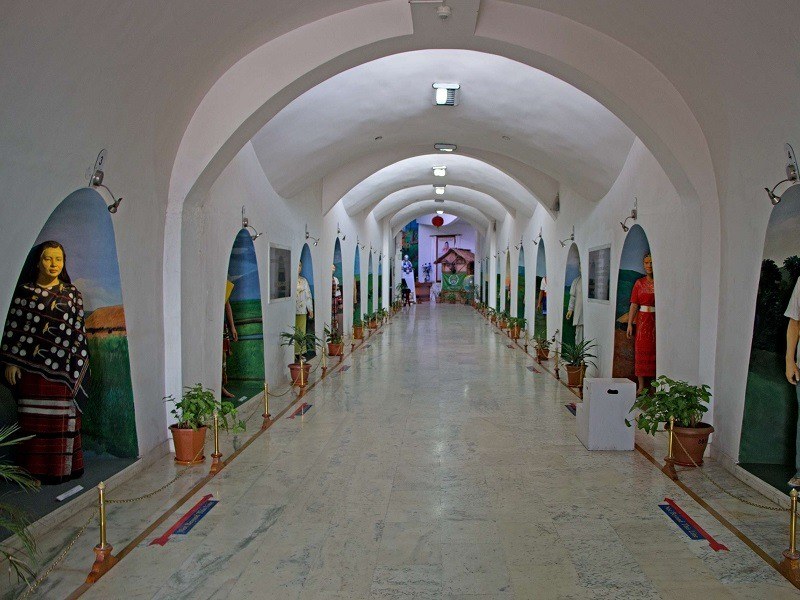
The Don Bosco Museum is one of the most iconic attractions in Shillong, Meghalaya. It stands tall as a vibrant symbol of the rich cultural diversity found in the northeastern part of India. This museum is more than just a building with artifacts—it is a living narrative of the people, traditions, art, and history of the eight northeastern states. Its purpose is both educational and inspirational, providing a glimpse into a world that many people have never had the chance to see up close.
Located in the Mawlai area of Shillong, the capital of Meghalaya, the Don Bosco Museum is an experience that blends tradition with modern presentation. It is often referred to as the finest museum of Indigenous Cultures in Asia. Managed by the Salesian order of the Catholic Church, this museum is also a tribute to St. John Bosco, commonly known as Don Bosco, who was committed to the education and welfare of youth.
A Unique Structure with Seven Floors of Discovery
The museum itself is a striking architectural structure. From a distance, it looks like a honeycomb or a honeybee hive, which draws the attention of tourists and architecture lovers alike. This seven-story building has 17 different galleries, each dedicated to different themes that explore the cultural richness of the region.
Visitors who enter the Don Bosco Museum are taken on a journey through art, tradition, and everyday life as lived by the people of Northeast India. These galleries include sections on costumes, ornaments, musical instruments, weapons, photographs, and traditional tools used in agriculture and daily work. Each floor presents a specific dimension of life and culture, allowing visitors to deeply understand and appreciate how these societies have evolved while maintaining their heritage.
One of the most fascinating aspects is the use of modern techniques to showcase traditional life. Audio-visual effects, lifelike statues, and multimedia presentations help bring the exhibits to life. These features make the museum equally interesting for children and adults. Even those who are not typically interested in museums find themselves captivated here.
Cultural Significance and Educational Value
The Don Bosco Museum Shillong is not just a space for artifacts—it is a cultural hub that serves educational purposes as well. Students, researchers, and tourists visit the museum not only for leisure but also to learn. Many schools and universities bring students here as part of their educational tours. The museum promotes awareness of tribal life, encourages intercultural understanding, and helps preserve traditions that are slowly fading with time.
Another remarkable feature of the museum is its rooftop skywalk. From here, you can enjoy panoramic views of Shillong and the surrounding hills. It’s a perfect place for photography lovers and those who want a peaceful moment after a rich cultural experience indoors.
Every gallery is designed with care and depth. The museum doesn’t just display objects—it tells stories. Each artifact has a history and cultural meaning, and the museum does an excellent job of narrating these stories in simple, engaging ways. Information panels are written in English and are easy to understand, making the experience accessible even to those who may not have much prior knowledge of the region.
How to Reach and What to Expect
Reaching the Shillong Don Bosco Museum is quite easy. Shillong itself is well-connected by road to nearby cities like Guwahati, which has the nearest major railway station and airport. From the center of Shillong, local taxis and auto-rickshaws can easily take you to Mawlai, where the museum is located.
The museum is open from Monday to Saturday, usually from 9 AM to 5:30 PM. It remains closed on Sundays and certain public holidays. Entry is ticketed, with separate charges for Indian and foreign tourists. Cameras are allowed inside, though there may be a small fee for photography.
The experience inside is both educational and emotional. Many visitors leave the museum with a deeper respect for Northeast India and its communities. The museum emphasizes unity in diversity and offers a reminder that even in a fast-paced world, cultural roots matter deeply.
Why the Don Bosco Museum in Shillong Is a Must-Visit
If you are visiting Meghalaya or planning a trip to Northeast India, then the Don Bosco Museum in Shillong must be on your itinerary. It offers a one-of-a-kind experience that no other museum in India provides. Unlike typical museums where items are displayed without context, this museum uses storytelling, technology, and interactivity to connect people with the lives and legacies of the tribal communities.
This is not just a place to see ancient objects. It is a place to feel the heartbeat of an entire region. Whether it’s the detailed display of traditional houses, the musical galleries filled with sounds of native instruments, or the colorful attire that tells tales of heritage—every corner of the museum invites you to pause and reflect.
For anyone curious about the roots of Northeast India’s diversity, visiting this museum is like opening a window into a world of color, tradition, and resilience. The team behind the museum has made a clear effort to respect and present tribal cultures with dignity and depth. Their work helps preserve these cultures while educating the wider public.
Final Thoughts
The Don Bosco Museum is a cultural treasure that does more than display history—it brings it to life. Through its detailed exhibits, thoughtful curation, and welcoming atmosphere, it encourages visitors to appreciate the unseen and often misunderstood world of Northeast India. Whether you’re a history buff, a student, a traveler, or just someone curious to learn, this museum will leave a lasting impression.
If you ever find yourself in Shillong, don’t miss the chance to walk through its doors. The Shillong Don Bosco Museum is a beacon of cultural pride, and by stepping inside, you join a journey through the living traditions of India’s northeast.